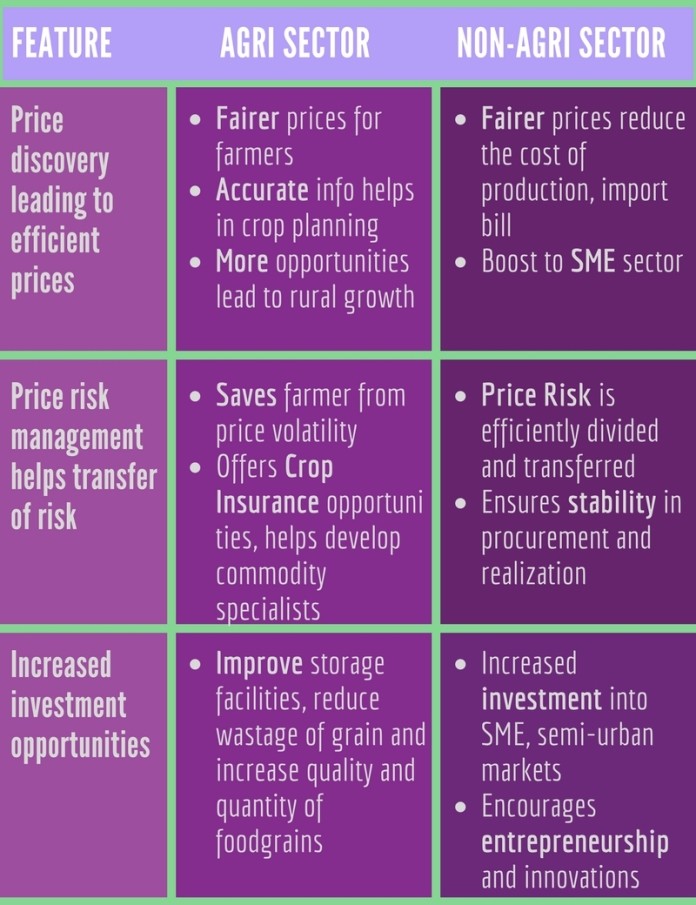
Parts 1, 2, 3, 4 and 5 of this series can be accessed from this page. This is Part 6.
How FTIL became a Force Multiplier
Soon after coming to office, on September 25, 2014 Narendra Modi announced the Make In India initiative[1]. The major objective of the initiative was to focus on job creation and skill enhancement in 25 sectors of the economy. At the same time, the initiative also aims at high-quality standards and minimizing the impact on the environment. Well, Jignesh Shah’s FTIL eco-system was already creating its own Make in India narrative, creating a million jobs and a million opportunities[2].
Having a standardized procurement center across the length and breadth of India had its advantages – Multi-national Fast food chains did not mind paying a premium of up to 25% more for produce warehoused at the NBHC since they were assured of the quality.
As Figure 1 shows, FTIL created many avenues that generated jobs.

FTIL: Trading terminals that were spread across the nation, employing 2 to 3 people per terminal. At a given time, about 3.5 Lakh (350,000) terminals ran FTIL’s ODIN software. This alone created close to 7 Lakh (700,000) jobs.
MCX: A number of jobs were created in the real economy of the rural areas. In addition to creating jobs in the Exchange industry and trading-related activities, MCX spun off a number of jobs in the Commodity Market Value Chain such as Distribution, Grading, Assaying, Valuing, Warehousing, Finance, Risk Management and related activities.
NBHC: This entity emerged as the largest collateral management facility in the private sector, creating numerous jobs in the rural areas.
IEX: Better pricing and distribution of Electricity have led to better sustainability of Small Scale and other Industries, adding jobs.
Eco-system Verticals: Software verticals such as Ticker (real-time information), Atom (Payment solutions) have added jobs across the value chain. FTKMC, setup for Knowledge Management and Skill Development, trained scores of youngsters and professionals enabling them to find better-paying jobs.
How MCX and NBHC worked together
Shah was not satisfied just with establishing a multi-commodity exchange (MCX). There was a need for having warehousing facilities with Cold Storage features so commodities could be stored. An important requirement was the quality that had to be maintained (otherwise how could you trade?). If potatoes were to be traded, they have to be of the same or very close in order for them to be traded on an exchange. From this need grew the next idea for Shah – The National Bulk Handling Corporation (NBHC). At its peak, it was the largest warehouse and collateral management facility in the private sector in India.

Having a standardized procurement center across the length and breadth of India had its advantages – Multi-national Fast food chains did not mind paying a premium of up to 25% more for produce warehoused at the NBHC since they were assured of the quality.
NBHC also eliminated the middleman that used to gobble up much of the profit the farmer made because the farmer did not have a way to store his produce. With MCX and NBHC, farmers knew the day to day pricing information and could be assured that they could realize the best profit. The benefits were not limited to agricultural sector alone – Non-agricultural sector also reaped the benefits (see Figure 3).

The video below describes how the FTIL eco-system created a million jobs and a million more opportunities.
To be continued…
[1] Make in India initiative – Sep 26, 2014, Business Standard
[2]A Million Jobs and a Million Opportunities – A study by Tata Institute of Social Sciences
- Indian Parliament’s Special Session is convened to mark the shifting to new Parliament building - September 3, 2023
- Why did Rajat Sharma of India TV not declare that Adani owns more than 16% shares in his channel? - January 29, 2023
- Prannoy Roy to get Rs.605 crore from Adani as per Stock Exchange filing. Why is Income Tax not acting on Roys’ dues of over Rs.800 crore? - January 4, 2023











Is it possible to get a copy of the TISS report please.
[…] FTIL – an engine that created millions of jobs – Nov 18, 2017, […]
[…] FTIL – an engine that created millions of jobs – Nov 18, 2017, […]
Dear Sree,
Let’s not beat around the bush. Where are all those stocks- which supposedly formed the basis of the transactions, carried out on the NSEL platform?
The article seems to have lost track. Looks more like a Jignesh Shah propaganda.
Dear Sree, suggest that you concentrate more on “C” family instead of Jignesh.
What are you basically trying to convey?